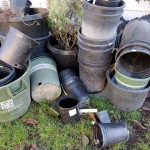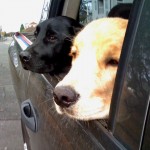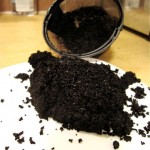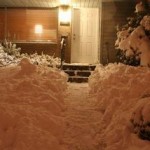1. Avoid using weed and feed products, which broadcast herbicides on
every inch of your lawn. Instead, choose a “slow-release” or “natural
organic” fertilizer, which gradually releases nutrients into the soil
to prevent runoff.
2. Plant drought-tolerant plants such as rosemary, lavender and sedum
that need little water once established. Efficient water use keeps
water in the rivers, creeks and streams for salmon and other fish,
especially during crucial summer months.
3. Think twice before reaching for herbicides. You can control weeds by
hand-pulling them or by building healthier soil to allow the grass or
plant you have there to out-compete weeds. Pulls weeds when they’re
early and young.
4. Plant a tree, or two or three. Trees catch rain and allows it
evaporate before reaching the ground. This reduces runoff, the main
source of pollution in the Puget Sound. Learn more from the Puget
Sound Partnership: http://www.psp.wa.gov/stormwater.php
5. Build healthy soil, which helps absorbs more runoff and filters out
pollutants. Amend your soil with compost, whether home-made or
purchased from places like Cedar Grove (which recycles most King
County residents yard waste into compost).
6. Mulch garden beds annually with compost, leaves, bark or wood chips
to cut down on weeds and watering. Mulch also helps prevent erosion.
7. Choose the right plants for the right spot to reduce the need for
excess watering, pruning, and fertilizing. Consider native plants.
8. Water plants deeply but infrequently. This helps grass, trees and
plants grow deep roots and prevent disease. After soaking the roots,
let the top few inches of soil dry before you water it again.
9. Install a few rain barrels. Seattle, King County and other
cities provide discounted rain barrels that you can install near your
downspout. The barrels allow you to catch rainwater into 55-gallon
barrels to water your plants at a later time.
10. Mulch mow, as we do at Ecoyards. Leave grass clippings on your
lawn. It not only saves time and yard waste, but returns water and
nutrients to your lawn.
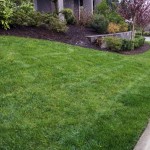
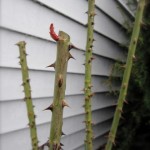
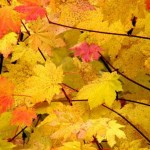 When it comes to picking plants for our landscape or for yours, we prefer to go native whenever possible. Trees, shrubs and other plants native to the Northwest — vine maples (right), sword fern, salal, beach strawberry, and Pacific dogwood — simply do better in our climate. In addition to requiring little maintenance, birds and other wildlife in our area have come to rely on these plants over decades and centuries to supply them with food, shelter and other needs.
When it comes to picking plants for our landscape or for yours, we prefer to go native whenever possible. Trees, shrubs and other plants native to the Northwest — vine maples (right), sword fern, salal, beach strawberry, and Pacific dogwood — simply do better in our climate. In addition to requiring little maintenance, birds and other wildlife in our area have come to rely on these plants over decades and centuries to supply them with food, shelter and other needs.